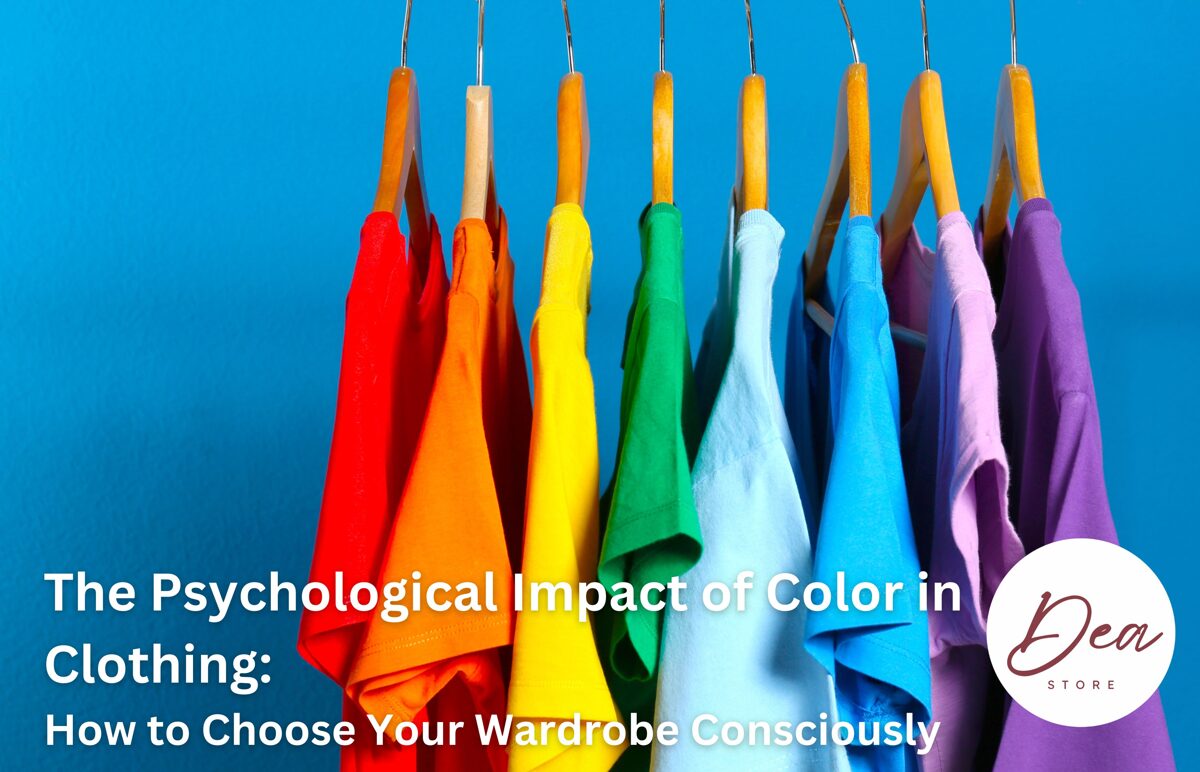The Psychological Impact of Color in Clothing: How to Choose Your Wardrobe Consciously

Color in clothing is not just a style element but also a powerful tool that influences our mood, self-perception, and the way others see us. Every morning, when we open our wardrobe, we choose not just clothes, but also our state of mind for the day: calm or energetic, confident or soft. It's also important to remember that the colors we wear affect those around us, shaping their attitude toward us.
Today, let's talk about how colors in clothing can influence both you and those around you.
Color and Its Impact on Ourselves
Colors affect our brains on a subconscious level, triggering various emotional responses. Color psychology suggests that each shade is associated with specific emotions, states, and even energy. For example:
- Warm colors (red, orange, yellow) stimulate activity, confidence, and even aggression. These are ideal for days when you need to feel strong and be the center of attention.
- Cool colors (blue, green, purple) calm, help focus, and create a sense of harmony. They are perfect for situations where you need to remain composed and confident.
- Neutral colors (black, gray, white, beige) are often seen as basic and universal, creating a sense of stability and reliability.
When we consciously choose certain colors, we can adjust our emotional state to the day's tasks. For instance, choosing bright yellow for an important meeting can subconsciously charge you with energy and optimism.
Colors and Their Influence on Others
Clothing is a way of non-verbal communication. Color sends messages to others even before we say the first word. For example:
- Red is perceived as a color of strength and passion. People wearing red often attract attention and are seen as confident and decisive.
- Blue is associated with trust and calmness, making it a popular choice for business meetings and negotiations.
- Black symbolizes power, elegance, and authority but can also evoke distance and coldness.
The choice of color in clothing affects how people perceive our personality. For example, wearing soft pastel tones might make you seem approachable and friendly. Bright and saturated colors can convey confidence and creativity, while darker tones are often associated with restraint and professionalism.
How to Choose the Right Color for Your Look?
To choose the right colors for your wardrobe, ask yourself a few questions:
- How do I want to feel today? If you need to feel calm, opt for cool or neutral shades. If you need energy, warm and bright tones are your go-to.
- How do I want others to perceive me? For example, blue or gray for important meetings can create a sense of confidence and professionalism.
- What message do I want to send to others? Your colors can tell a lot about your personality without saying a word — whether it's creativity, strength, or friendliness.
Colors are more than just shades on fabric. They are tools that help manage your mood, shape your image, and influence how others perceive you. In upcoming mini-posts, we will explore how each key color — from red to neutral — affects our psyche and how to use it in your daily wardrobe.
Stay tuned to our blog to learn how each color can become your ally in creating the perfect look!
Explore our shop deastore.eu for color inspiration.
